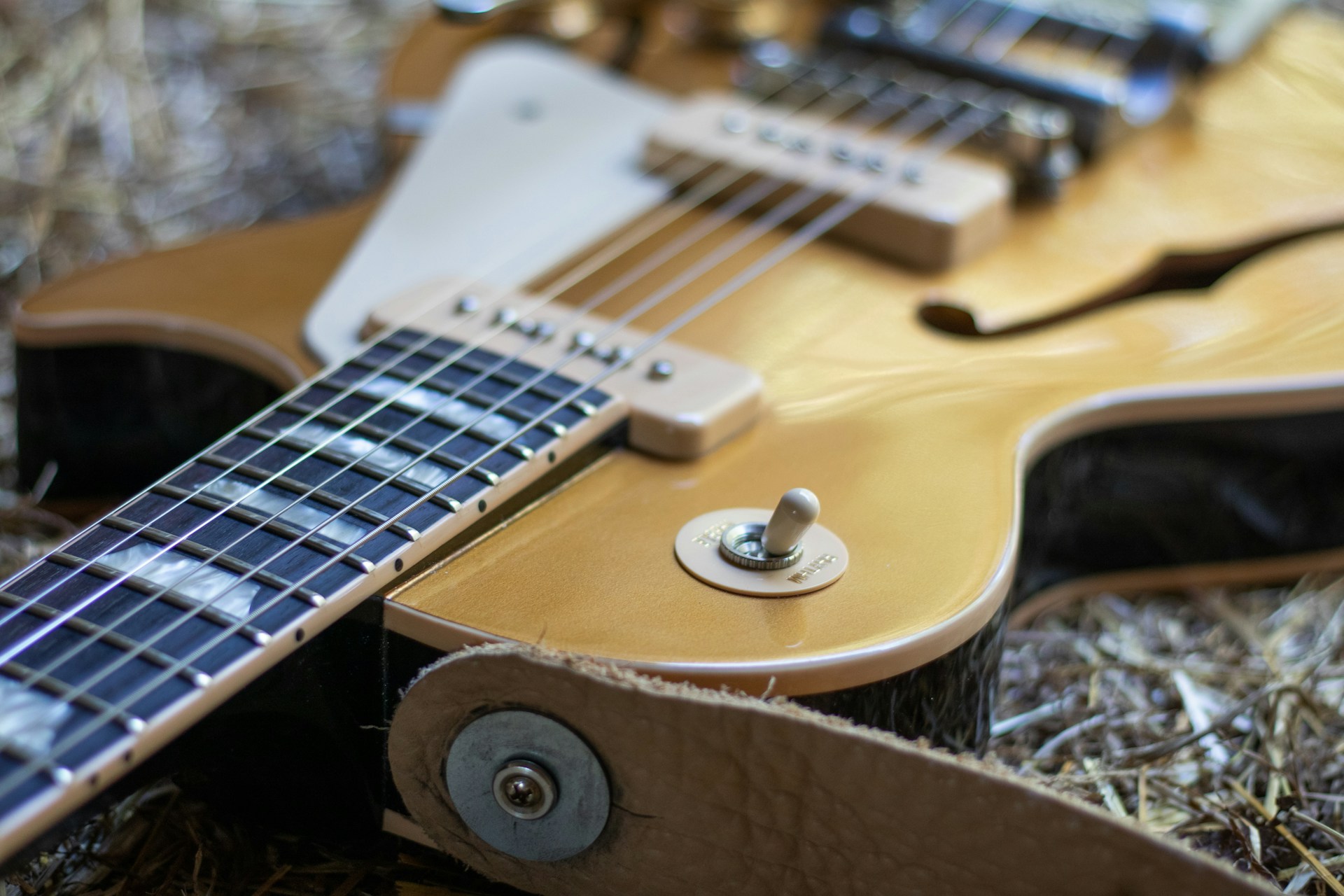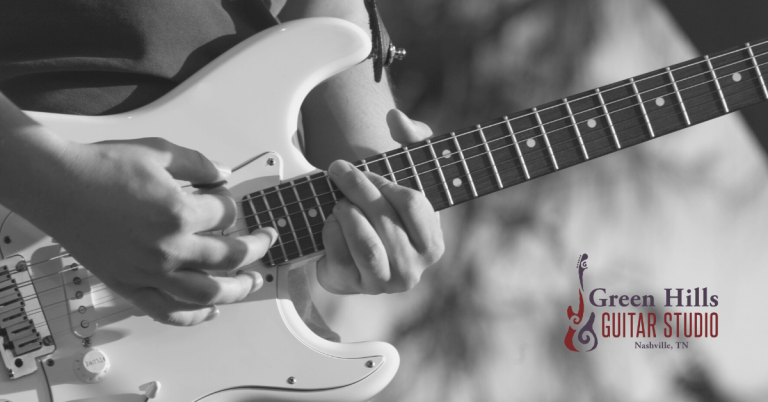10 Easy Guitar Songs from the 1950s
The 1950s were a groundbreaking decade for modern music, laying the foundation for rock and roll, blues, country, and pop. Learning songs from this era is a fantastic way to develop core guitar skills while connecting with some of the most influential music ever recorded. Whether it’s the rockabilly sound of Elvis Presley or the bluesy rhythms of Muddy Waters, this list offers essential songs that are fun to play and accessible for guitarists of all levels.
Let’s dive into these classic 50s tunes that are perfect for beginners and a great way to enhance your repertoire!
1. Johnny B. Goode – Chuck Berry
Considered one of the most iconic rock and roll songs of all time, Johnny B. Goode is a must-learn for any guitarist. The song’s simple chord progression and driving rhythm make it an excellent introduction to rock guitar.
Why “Johnny B. Goode” is Great for Beginners:
- Basic Chord Progression: The I-IV-V progression is foundational in rock and roll.
- Introductory Lead Work: The famous intro riff is a great exercise for building finger dexterity.
- Rock Classic: A timeless hit that’s always fun to play and instantly recognizable.
Chords & Structure:
- Key: A Major
- Chords: A, D, E
- Song Structure: Verse – Chorus – Verse – Chorus – Bridge – Chorus
2. That’ll Be the Day – Buddy Holly
This classic rock and roll track by Buddy Holly has a straightforward rhythm and simple chord progression, making it an ideal song for beginners looking to build strumming skills.
Why “That’ll Be the Day” is Great for Beginners:
- Simple Chords: Uses easy open chords that are perfect for beginners.
- Steady Rhythm: A great song to practice keeping time and consistency.
- Rockabilly Feel: A fun, upbeat song that’s great for playing along with others.
Chords & Structure:
- Key: G Major
- Chords: G, C, D
- Song Structure: Verse – Chorus – Verse – Chorus – Bridge – Chorus
3. Fever – Peggy Lee
This sultry classic by Peggy Lee is a slower, blues-influenced song that’s perfect for beginners. The simple chord structure and steady rhythm make it an easy tune to get started with, and its timeless melody is fun to play.
Why “Fever” is Great for Beginners:
- Basic Chords: Uses simple, easy-to-follow chords.
- Slow Tempo: Perfect for practicing smooth transitions and rhythm.
- Bluesy Feel: A great introduction to bluesy, jazz-inspired rhythms and chords.
Chords & Structure:
- Key: A Minor
- Chords: Am, Dm, E7
- Song Structure: Verse – Chorus – Verse – Chorus – Bridge – Chorus
4. Blue Suede Shoes – Carl Perkins
This early rockabilly hit has a fast, fun tempo and a simple chord progression, making it a perfect song to get comfortable with rhythm and quick chord changes.
Why “Blue Suede Shoes” is Great for Beginners:
- Easy Chords: A simple I-IV-V progression that’s great for beginners.
- Upbeat Tempo: Helps you practice faster strumming and chord changes.
- Rockabilly Classic: A fun, lively song that’s great for building confidence on the guitar.
Chords & Structure:
- Key: A Major
- Chords: A, D, E
- Song Structure: Verse – Chorus – Verse – Chorus – Bridge – Chorus
5. Hound Dog – Big Mama Thornton
Before Elvis Presley made this song famous, Big Mama Thornton recorded it in 1952. Her original version carries a raw bluesy edge that’s perfect for beginners wanting to explore blues rhythm and dynamics. The repetitive chord progression and soulful delivery make this a must-learn for anyone interested in the roots of rock and roll.
Why “Hound Dog” is Great for Beginners:
- Basic Chords: Features a simple, repetitive I-IV-V blues progression.
- Blues Rhythm: Great for developing a feel for rhythm and dynamics.
- Blues Classic: An essential track for understanding the early foundations of rock and roll.
Chords & Structure:
- Key: C Major
- Chords: C, F, G
- Song Structure: Verse – Chorus – Verse – Chorus – Bridge – Chorus
6. Love Me Tender – Elvis Presley
This ballad is a beautiful, slow-paced song with simple chords. Love Me Tender is perfect for beginners looking to work on smooth chord transitions and playing with dynamics.
Why “Love Me Tender” is Great for Beginners:
- Simple Chords: Uses basic open chords that are easy to follow.
- Slow Tempo: Perfect for practicing smooth transitions and expressive playing.
- Emotional Melody: A beautiful song to practice playing with dynamics and emotion.
Chords & Structure:
- Key: D Major
- Chords: D, A7, G, E7
- Song Structure: Verse – Chorus – Verse – Chorus – Bridge – Chorus
7. Mannish Boy – Muddy Waters
Mannish Boy is a staple of the blues genre and features a simple, repetitive riff that’s ideal for beginners. This song is a great introduction to blues rhythm and the power of playing with feeling.
Why “Mannish Boy” is Great for Beginners:
- Basic Riff: Simple, repetitive riff that’s easy to learn and perfect for practicing rhythm.
- Blues Roots: A classic example of blues that’s fun to play and foundational to modern guitar.
- Dynamic Playing: Teaches you to play with energy and feeling.
Chords & Structure:
- Key: A Major
- Chords/Riff: A, D, E
- Song Structure: Riff-based song with a repeated structure.
8. Tutti Frutti – Little Richard
Tutti Frutti is a high-energy rock and roll hit that’s fun to play and perfect for developing your rhythm and timing. The simple chord progression and fast tempo make it an exciting song for beginners.
Why “Tutti Frutti” is Great for Beginners:
- Simple Chords: Uses basic open chords, making it easy to follow.
- Fast Tempo: Helps you develop your rhythm and timing with an upbeat song.
- Fun to Play: A lively rock and roll song that’s great for getting comfortable with faster strumming.
Chords & Structure:
- Key: F Major
- Chords: F, Bb, C
- Song Structure: Verse – Chorus – Verse – Chorus – Bridge – Chorus
9. Summertime Blues – Eddie Cochran
A classic 1950s rockabilly song, Summertime Blues has a simple structure and is perfect for beginners. The easy chord changes and upbeat tempo make it a fun song to play along to.
Why “Summertime Blues” is Great for Beginners:
- Basic Chords: Easy chord progression that’s great for beginners.
- Catchy Rhythm: Helps you work on your timing and strumming technique.
- Rockabilly Vibe: A fun, energetic song that’s perfect for any beginner’s repertoire.
Chords & Structure:
- Key: E Major
- Chords: E, A, B
- Song Structure: Verse – Chorus – Verse – Chorus – Bridge – Chorus
10. Folsom Prison Blues – Johnny Cash
This iconic country-blues song by Johnny Cash is a must-learn for any guitarist. The simple rhythm and classic progression make it a great choice for beginners who want to work on rhythm guitar.
Why “Folsom Prison Blues” is Great for Beginners:
- Simple Chords: Uses an easy I-IV-V progression.
- Steady Rhythm: Great for practicing rhythm guitar and consistent strumming.
- Country Classic: A timeless song that’s fun to play and instantly recognizable.
Chords & Structure:
- Key: E Major
- Chords: E, A, B7
- Song Structure: Verse – Chorus – Verse – Chorus – Bridge – Chorus
Essential Tips for Beginning Guitar Players
- Start with Foundational Chords: Many of these songs rely on simple chords like G, C, and D. Focus on mastering these chords to build a strong foundation.
- Practice Smooth Transitions: Work on switching between two chords at a time until transitions feel smooth and natural. This will improve your overall flow when playing through a song.
- Focus on Rhythm and Timing: Use a metronome to develop your timing, and practice strumming along with the beat. A strong sense of rhythm is key to mastering many of these songs.
- Break Songs into Sections: Don’t try to learn a whole song at once. Break it down into verses and choruses, and practice each section until you feel comfortable before combining them.
- Stay Consistent: Regular practice, even if just for a few minutes a day, will help you improve over time and make these songs easier to play.
The Coda
The 1950s brought us some of the most influential music in history, and these 10 easy guitar songs from the decade are perfect for beginners looking to build their skills and repertoire. Whether you’re playing Chuck Berry’s classic riffs or the soulful tones of Peggy Lee, these tracks will help you develop essential techniques like chord transitions, rhythm, and strumming.
Looking to take your guitar playing further? Green Hills Guitar Studio offers personalized guitar lessons in Nashville to help you reach your guitar goals. Contact us today to start building your skills and expanding your repertoire!






